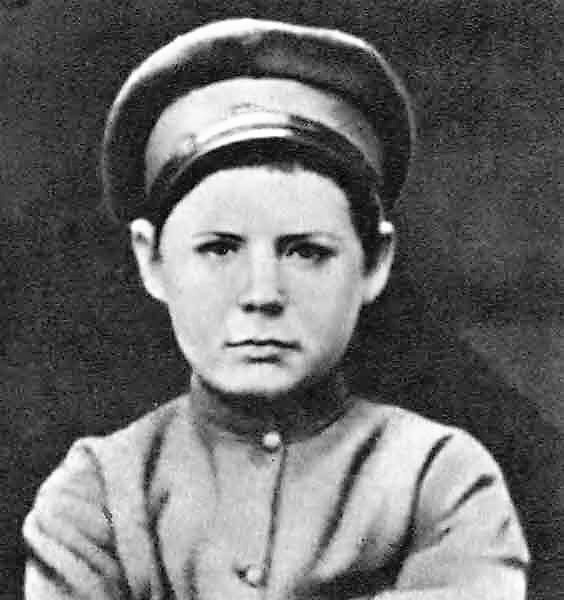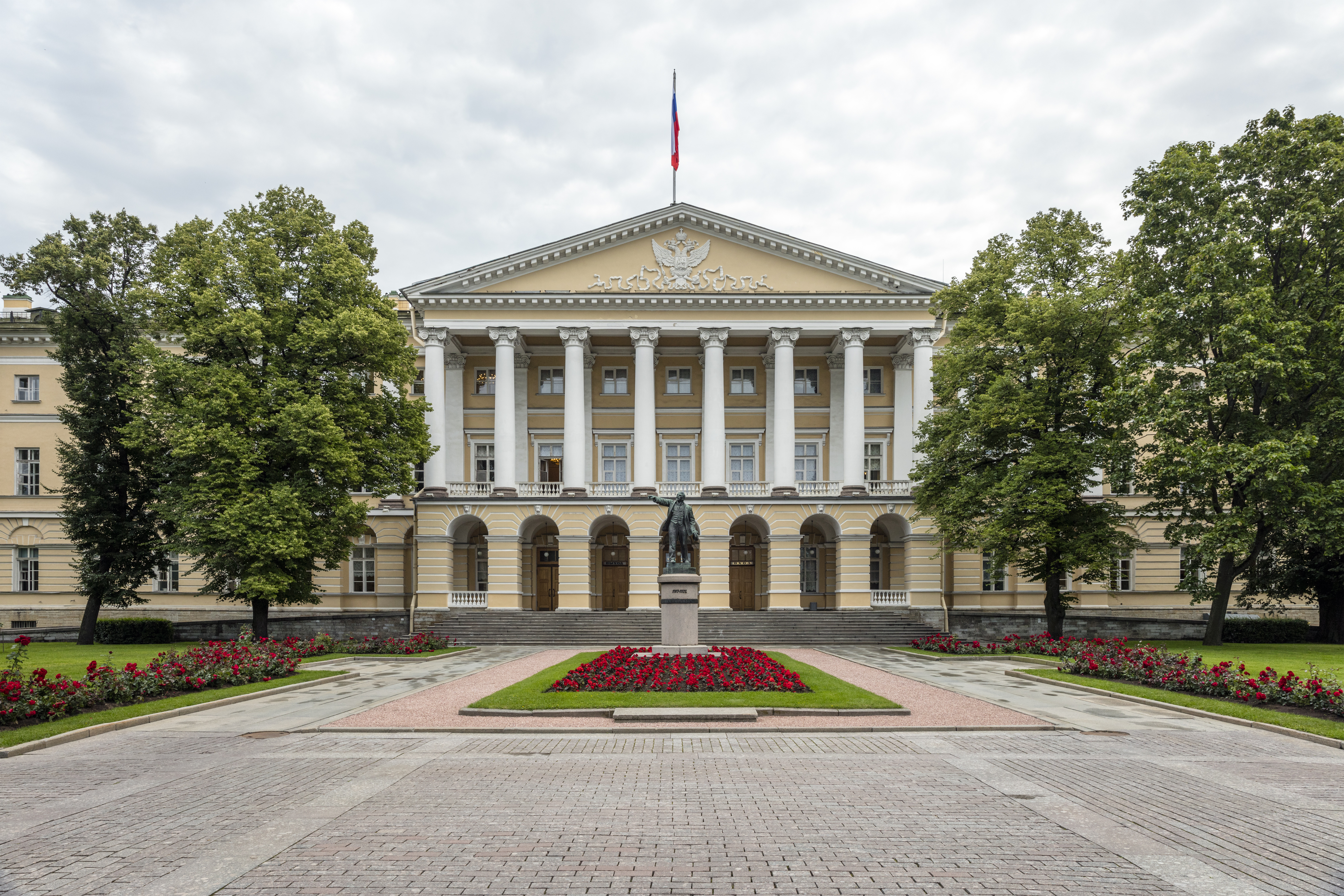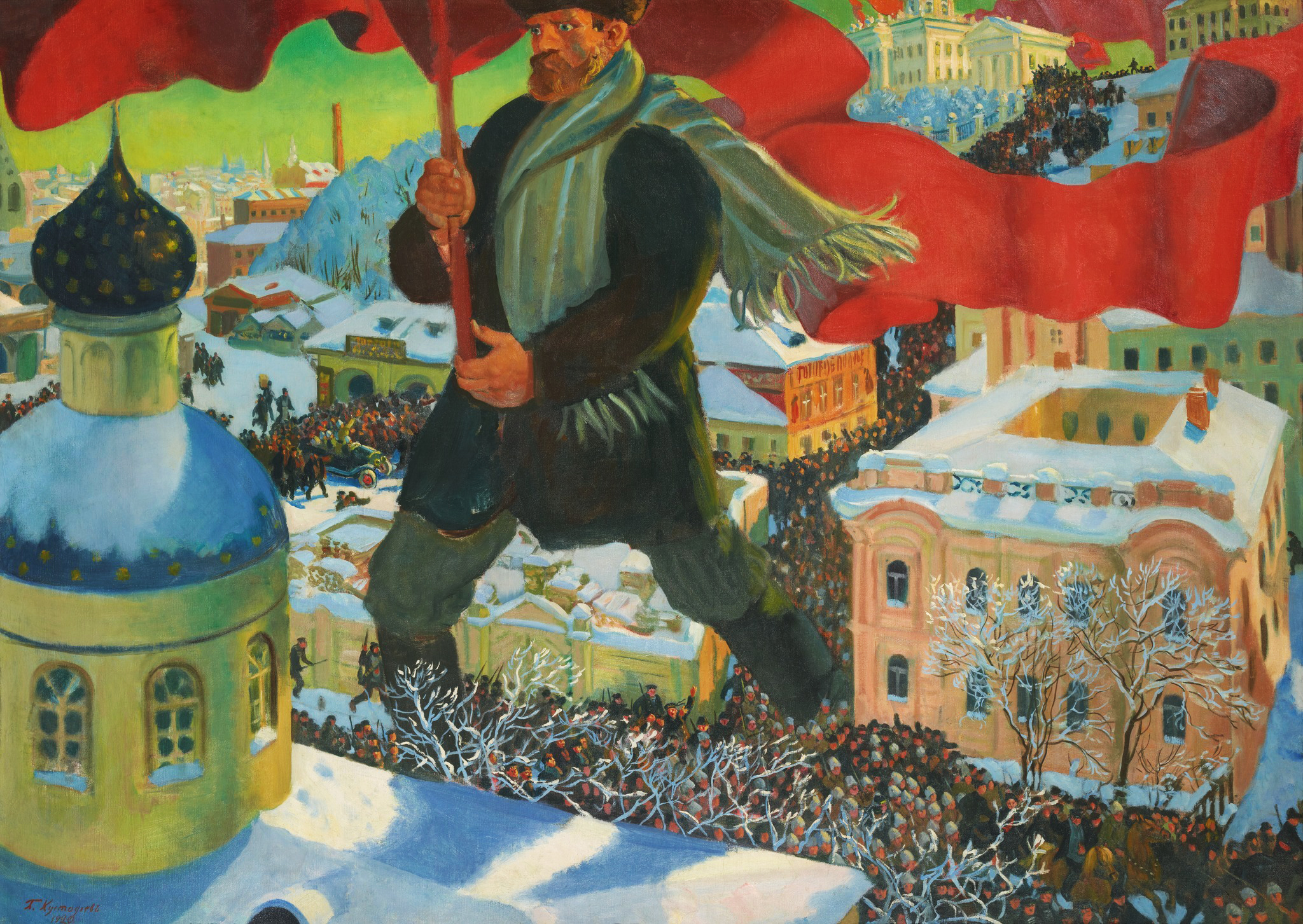|
Sergey Kirov
Sergei Mironovich Kirov (born Kostrikov; 27 March 1886 – 1 December 1934) was a Russian and Soviet politician and Bolshevik revolutionary. Kirov was an early revolutionary in the Russian Empire and a member of the Bolshevik faction of the Russian Social Democratic Labour Party. Kirov became an Old Bolshevik and personal friend to Joseph Stalin, rising through the Communist Party of the Soviet Union ranks to become head of the party in Leningrad and a member of the Politburo. On 1 December 1934, Kirov was shot and killed by Leonid Nikolaev at his offices in the Smolny Institute. Nikolaev and several alleged accomplices were convicted in a show trial and executed less than 30 days later. Kirov's assassination was used by Stalin as a reason for starting the Moscow trials and the Great Purge. Early life Sergei Mironovich Kostrikov was born on in Urzhum in Vyatka Governorate, Russian Empire, as one of seven children born to Miron Ivanovich Kostrikov and Yekaterina Kuzmini ... [...More Info...] [...Related Items...] OR: [Wikipedia] [Google] [Baidu] |
Azerbaijani Communist Party
The Azerbaijan Communist Party (; ) was the ruling political party in the Azerbaijan Soviet Socialist Republic, Azerbaijan SSR, making it effectively a branch of the Communist Party of the Soviet Union. It was formed on 20 February 1920, when the Muslim Social Democratic Party, Communist Party of Persia, Ahrar Party (Azerbaijan), Ahrar Party and the Baku Bolsheviks joined together to establish the Communist Party of Azerbaijan. On 1 April of the same year, the Fifth Cabinet of Ministers of the Azerbaijan Democratic Republic gave its resignations and all the power to the Communist Party of Azerbaijan. The party ruled the Azerbaijan SSR until 14 September 1991 when it was formally disbanded. Nevertheless, former leaders and members of the communists continued to play a role in the family- and patronage-based political system. The Communist Party of Azerbaijan won the first multi-party elections in Azerbaijan that took place on 30 September and 14 October 1990 for the Supreme Sovie ... [...More Info...] [...Related Items...] OR: [Wikipedia] [Google] [Baidu] |
Orgburo
The Orgburo (), also known as the Organisational Bureau (), of the Central Committee of the Communist Party of the Soviet Union existed from 1919 to 1952, when it was abolished at the 19th Congress of the Communist Party and its functions were transferred to the enlarged Secretariat. Role The Orgburo was established during Lenin's government to make important decisions about organisational work in the Communist Party. It was originally designed to have equal political weight as Politburo and Secretariat. It oversaw the work of local Party committees and had the power to select and place Communist Party members in positions as it saw fit. The functions of the Orgburo and the Politburo were often interconnected, but the latter was ultimately the final decision-maker. While the Politburo mostly focused on strategic planning and monitoring of the people and status of the country, the Orgburo was tasked with overseeing the Party cadre and its assignment to various positions ... [...More Info...] [...Related Items...] OR: [Wikipedia] [Google] [Baidu] |
Smolny Institute
The Smolny Institute () is a Palladian edifice in Saint Petersburg that has played a major part in the history of Russia, notably as a center of women's education, and the headquarters of the Bolsheviks during the early stages of the October Revolution. History The building was commissioned from Giacomo Quarenghi by the Society for Education of Noble Maidens and constructed in 1806–08 to house the Smolny Institute of Noble Maidens, established at the urging of Ivan Betskoy and in accordance with a decree of Catherine II (the Great) in 1764, borrowing its name from the nearby Smolny Convent. The establishment of the institute was a significant step in making education available for females in Russia: "The provision of formal education for women began only in 1764 and 1765, when Catherine II established first the Smolny Institute for girls of the nobility in Saint Petersburg and then the Novodevichii Institute for the daughters of commoners." The Smolny was Russia's ... [...More Info...] [...Related Items...] OR: [Wikipedia] [Google] [Baidu] |
Leonid Nikolaev
Leonid Vasilevich Nikolaev (10 May 1904 – 29 December 1934) was the Russian assassin of Sergei Kirov, the First Secretary of Leningrad City Committee of the Communist Party of the Soviet Union. Early life Nikolaev was a troubled young Soviet Communist Party member in Leningrad. He was a small, thin man, about tall; even as an adult he showed the effects of childhood malnutrition. He had difficulty holding a job, and had been reprimanded by the Party for having refused a posting that was not to his liking. Eventually, the Party expelled him as a member. Unemployed, he soon ran short of money, and blamed the Party for his troubles. His Latvian-Russian wife Milda Draule was a member of a regional party committee and he had a strong suspicion that she had a love affair with Sergei Kirov, the Party administrator of the Leningrad district, although no evidence of that has been discovered. Assassination of Sergei Kirov It is unknown whether Nikolaev had had prior dealings wi ... [...More Info...] [...Related Items...] OR: [Wikipedia] [Google] [Baidu] |
Joseph Stalin
Joseph Vissarionovich Stalin (born Dzhugashvili; 5 March 1953) was a Soviet politician and revolutionary who led the Soviet Union from 1924 until Death and state funeral of Joseph Stalin, his death in 1953. He held power as General Secretary of the Communist Party of the Soviet Union, General Secretary of the Communist Party from 1922 to 1952 and as the fourth Premier of the Soviet Union, premier from 1941 until his death. He initially governed as part of a Collective leadership in the Soviet Union, collective leadership, but Joseph Stalin's rise to power, consolidated power to become an absolute dictator by the 1930s. Stalin codified the party's official interpretation of Marxism as Marxism–Leninism, while the totalitarian political system he created is known as Stalinism. Born into a poor Georgian family in Gori, Georgia, Gori, Russian Empire, Stalin attended the Tiflis Theological Seminary before joining the Marxist Russian Social Democratic Labour Party. He raised f ... [...More Info...] [...Related Items...] OR: [Wikipedia] [Google] [Baidu] |
Old Bolshevik
The Old Bolsheviks (), also called the Old Bolshevik Guard or Old Party Guard, were members of the Bolshevik faction of the Russian Social Democratic Labour Party prior to the Russian Revolution of 1917. Many Old Bolsheviks became leading politicians and bureaucrats in the Soviet Union and the ruling Communist Party. While some died over the years from natural causes, many were removed from power, imprisoned in gulags or executed by the late 1930s, as a result of the Great Purge by Joseph Stalin. Overview Definition Initially, the term "Old Bolshevik" referred to Bolsheviks who joined the Russian Social Democratic Labour Party before 1905. On February 13, 1922, under the chairmanship of the Old Bolshevik historian Mikhail Olminsky, the Society of Old Bolsheviks () at the Istpart (Commission on the Study of the History of the October Revolution and RCP(b)) was established. The first Statute required membership before January 1, 1905, with admission in some cases of other Socia ... [...More Info...] [...Related Items...] OR: [Wikipedia] [Google] [Baidu] |
Bolshevik
The Bolsheviks, led by Vladimir Lenin, were a radical Faction (political), faction of the Marxist Russian Social Democratic Labour Party (RSDLP) which split with the Mensheviks at the 2nd Congress of the Russian Social Democratic Labour Party, Second Party Congress in 1903. The Bolshevik party, formally established in 1912, seized power in Russia in the October Revolution of 1917, and was later renamed the Russian Communist Party, All-Union Communist Party, and ultimately the Communist Party of the Soviet Union. Its ideology, based on Leninism, Leninist and later Marxism–Leninism, Marxist–Leninist principles, became known as Bolshevism. The origin of the RSDLP split was Lenin's support for a smaller party of professional revolutionaries, as opposed to the Menshevik desire for a broad party membership. The influence of the factions fluctuated in the years up to 1912, when the RSDLP formally split in two. The political philosophy of the Bolsheviks was based on the Leninist pr ... [...More Info...] [...Related Items...] OR: [Wikipedia] [Google] [Baidu] |
Russian Empire
The Russian Empire was an empire that spanned most of northern Eurasia from its establishment in November 1721 until the proclamation of the Russian Republic in September 1917. At its height in the late 19th century, it covered about , roughly one-sixth of the world's landmass, making it the list of largest empires, third-largest empire in history, behind only the British Empire, British and Mongol Empire, Mongol empires. It also Russian colonization of North America, colonized Alaska between 1799 and 1867. The empire's 1897 census, the only one it conducted, found a population of 125.6 million with considerable ethnic, linguistic, religious, and socioeconomic diversity. From the 10th to 17th centuries, the Russians had been ruled by a noble class known as the boyars, above whom was the tsar, an absolute monarch. The groundwork of the Russian Empire was laid by Ivan III (), who greatly expanded his domain, established a centralized Russian national state, and secured inde ... [...More Info...] [...Related Items...] OR: [Wikipedia] [Google] [Baidu] |
Kremlin Wall Necropolis
The Kremlin Wall Necropolis is the former national cemetery of the Soviet Union, located in Red Square in Moscow beside the Moscow Kremlin Wall, Kremlin Wall. Burials there began in November 1917, when 240 pro-Bolsheviks who died during the Moscow Bolshevik Uprising were buried in mass graves. The improvised burial site gradually transformed into the centerpiece of military and civilian honor during the World War II, Second World War. It is centered on Lenin's Mausoleum, initially built in wood in 1924 and rebuilt in granite in 1929–30. After the last mass burial in Red Square in 1921, funerals there were usually conducted as state funeral, state ceremonies and reserved as the final honor for highly venerated politicians, military leaders, cosmonauts, and scientists. In 1925–1927, burials in the ground were stopped; funerals were now conducted as burials of cremated ash in the Kremlin wall itself. Burials in the ground resumed with Mikhail Kalinin's funeral in 1946. The Kreml ... [...More Info...] [...Related Items...] OR: [Wikipedia] [Google] [Baidu] |
Communist Party Of The Soviet Union
The Communist Party of the Soviet Union (CPSU),. Abbreviated in Russian as КПСС, ''KPSS''. at some points known as the Russian Communist Party (RCP), All-Union Communist Party and Bolshevik Party, and sometimes referred to as the Soviet Communist Party (SCP), was the founding and ruling political party of the Soviet Union. The CPSU was the One-party state, sole governing party of the Soviet Union until 1990 when the Congress of People's Deputies of the Soviet Union, Congress of People's Deputies modified Article 6 of the Soviet Constitution, Article 6 of the 1977 Soviet Constitution, which had previously granted the CPSU a monopoly over the political system. The party's main ideology was Marxism–Leninism. The party was outlawed under Russian President Boris Yeltsin's decree on 6 November 1991, citing the 1991 Soviet coup attempt as a reason. The party started in 1898 as part of the Russian Social Democratic Labour Party. In 1903, that party split into a Menshevik ("mino ... [...More Info...] [...Related Items...] OR: [Wikipedia] [Google] [Baidu] |
Bolsheviks
The Bolsheviks, led by Vladimir Lenin, were a radical Faction (political), faction of the Marxist Russian Social Democratic Labour Party (RSDLP) which split with the Mensheviks at the 2nd Congress of the Russian Social Democratic Labour Party, Second Party Congress in 1903. The Bolshevik party, formally established in 1912, seized power in Russia in the October Revolution of 1917, and was later renamed the Russian Communist Party, All-Union Communist Party, and ultimately the Communist Party of the Soviet Union. Its ideology, based on Leninism, Leninist and later Marxism–Leninism, Marxist–Leninist principles, became known as Bolshevism. The origin of the RSDLP split was Lenin's support for a smaller party of professional revolutionaries, as opposed to the Menshevik desire for a broad party membership. The influence of the factions fluctuated in the years up to 1912, when the RSDLP formally split in two. The political philosophy of the Bolsheviks was based on the Leninist pr ... [...More Info...] [...Related Items...] OR: [Wikipedia] [Google] [Baidu] |
Russian Social Democratic Labour Party
The Russian Social Democratic Labour Party (RSDLP), also known as the Russian Social Democratic Workers' Party (RSDWP) or the Russian Social Democratic Party (RSDP), was a socialist political party founded in 1898 in Minsk, Russian Empire. The party emerged from the merger of various Marxist groups operating under Tsarist repression, and was dedicated to the overthrow of the autocracy and the establishment of a socialist state based on the revolutionary leadership of the Russian proletariat. The RSDLP's formative years were marked by ideological and strategic disputes culminating at its Second Congress in 1903, where the party split into two main factions: the Bolsheviks, led by Vladimir Lenin, who advocated a tightly organized vanguard of professional revolutionaries; and the Mensheviks, led by Julius Martov and others, who favored a more moderate, broad-based model. During and in the years after the 1905 Revolution, the RSDLP operated both legally and underground, publ ... [...More Info...] [...Related Items...] OR: [Wikipedia] [Google] [Baidu] |





